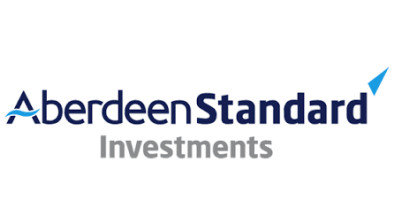Aberdeen Diversified Income and Growth Plc sees NAV rise by 12.5%

Nalaka De Silva
Aberdeen Diversified Income and Growth Plc, a fund managed by abrdn, has seen its Net Asset Value (NAV) total return rise by 12.5% in the year ended 30 September 2021.
This is compared to -0.8% in 2020.
Share price total return also rose by 15.6%, compared to -10.6% in 2020.
Total dividends paid during the year represented a yield of 5.5% based on the year end share price of 100.0 pence.
The board confirmed, as part of the strategic review, its intention to continue to pay at least the current level of dividend, using its revenue reserves, which have been built up by the company over many years, to support the dividend policy as required.
Three interim dividends of 1.38 pence per share were paid to shareholders in March, July and October 2021. The board is declaring a fourth interim dividend of 1.38 pence per share to be paid on 20 January 2022 to shareholders on the register on 24 December 2021.
Total dividends for the year are 5.52 pence per share, 1.5% higher than the 5.44 pence per share paid in respect of the year ended 30 September 2020.
Nalaka De Silva, Jennifer Mernagh and Nic Baddeley, investment managers of Aberdeen Diversified Income and Growth Trust PLC, said: “The company has enjoyed a good year, with a NAV total return (including income, with debt measured at fair value) of 12.5% and a share price total return of 15.6%. This is an important step for the company towards achieving its stated return target of 6% annualised on a five year rolling basis.
“Through building a well-diversified portfolio of investments, including a substantial exposure to infrastructure and real assets, the company has responded well to the bouts of shorter term volatility that have swept the markets during the last year. The company has been able to take a long term view regarding how economies will evolve, supported by the breadth of research and investment capabilities across the abrdn franchise. Given the goal of delivering a suite of diversified returns due to the latitude of the mandate, pleasingly, positive returns have been generated across the majority of the portfolio.
“Remaining resilient to the challenges posed by the current environment is a key aim. The investment strategy seeks to achieve diversification across asset classes within a simplified framework under four main headings: Private Markets, Fixed Income & Credit, Listed Alternatives and Listed Equities. Exposure to the broad expertise of abrdn across these asset classes, including approximately 350 Private Markets-focused investment professionals, allows the company to allocate to best in class products, both internally and externally.”
Commenting on the outlook, they added: “We expect global growth to slow from here, and although we believe we are past the peak of the recovery, growth will remain high on a relative basis. The growth generated by the sudden reopening of economies, as well as the supportive policy backdrop, is resulting in higher inflation than anticipated, but we still believe that this inflation will be transitory in Developed Markets.
“The same is true for many Emerging Markets, some of which have been forced to raise interest rates, but we believe that their vaccination roll out is progressing well and that inflation will also be transitory there as well. Regarding monetary policy, whilst we expect a less accommodative stance, particularly from the US Federal Reserve which has been key, we believe that it remains supportive, and that fiscal policy will take over in terms of market support in the long run.”
They continued: “While there remains doubt over how economies may evolve, including the impact of the emerging omicron variant of COVID-19, we consider that the company is well positioned for this uncertain environment owing to the public private multi-asset nature of the investment policy. Firstly, this allows the company to access Private Markets investments that have the potential to deliver returns in excess of those available from public markets.
“Secondly, there is the potential for capital growth, which we believe will continue to be available in certain Listed Equities markets. Finally, there is the income generation capability that we expect to be available from holdings in Fixed Income & Credit and Listed Alternatives.
“At the same time the company has a good degree of protection if we move into an inflationary environment, although this is not our base case. The company has a reasonably high weighting to infrastructure and real estate assets, both within its Private Markets and Listed Alternatives exposures. The cash flows of these assets are often inflation linked, and contracted either directly or indirectly to government. In addition, the portfolio is exposed to floating rate credit instruments across Private Markets, Fixed Income & Credit, and to a lesser extent, Listed Alternative assets.”







